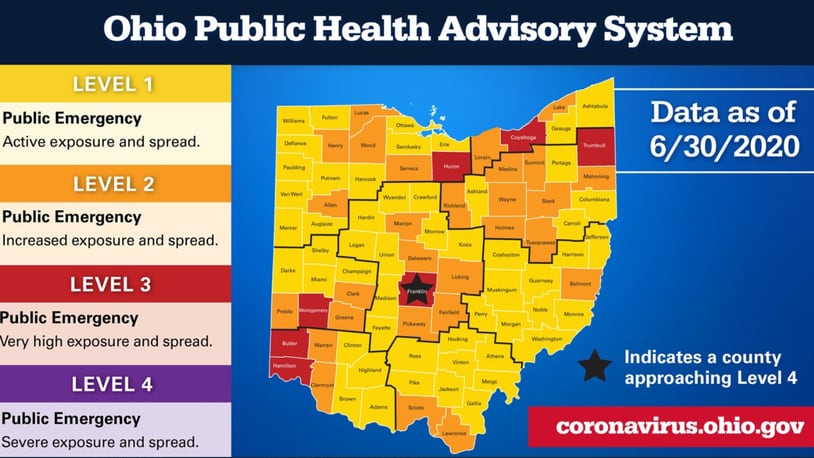State health officials created seven indicators to determine which alert level each county is in.
The seven indicators include:
- New cases per capita
- Sustained increase in new cases
- Proportion of cases not congregate cases
- Sustained increase in emergency room visits
- Sustained increase in outpatient visits
- Sustained increase in new coronavirus hospital admissions
- ICU bed occupancy
The risk levels range from Level 1, 2, 3 and 4.
In Level 1, or yellow, counties meet zero or one of the indicators. Level 1 counties have active exposure and spread of coronavirus. It is the least severe level.
In Level 2, or orange, two or three indicators are met. Counties in Level 2 have increased exposure and spread and residents should exercise caution.
In Level 3, or red, counties meet four or five indicators. The risk is very high for exposure and spread and residents should limit activities as much as possible and wear a mask when they go out in public.
In Level 4, or purple six or seven indicators are met. Counties have severe threat for exposure or spread of the virus and residents should only leave home for supplies and services. Level 4 is the most severe level.
The alert levels are meant to educate individuals, businesses and local officials about risk their county. For high-risk individuals, they should continue to take all precautions possible regardless of the alert level their county is in.
About the Author
